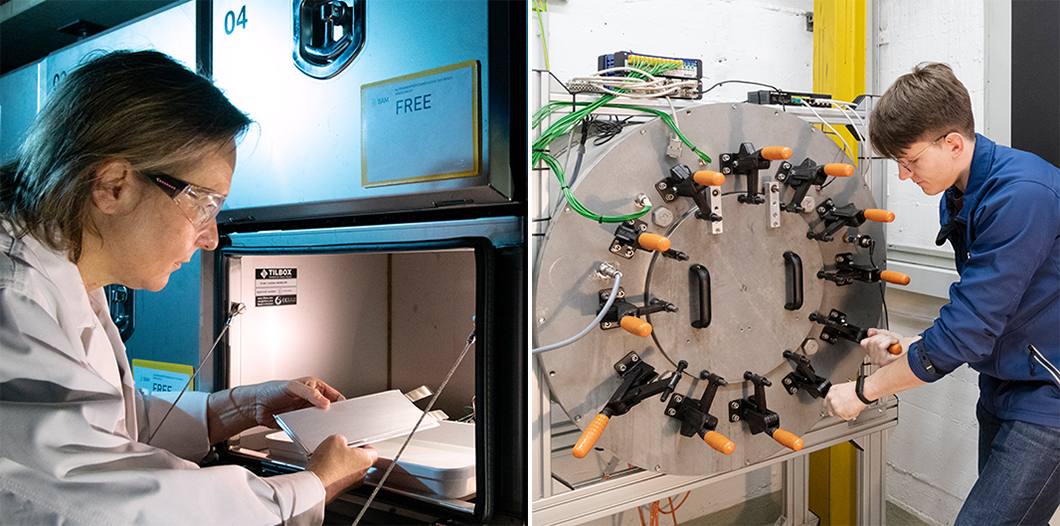
The State of Safety is crucial to implement and further develop lithium batteries.
Source: BAM
Electric battery storage is a key technology in the transformation towards climate neutrality. It will replace combustion engines in the automobile industry and will play a key role in the intermediate storage of wind and solar energy. BAM performs extensive research into the safety of this technology in its battery test centre to accelerate this transformation.
The German government’s goals call for at least 15 million fully electric cars to be on the roads by 2030 with the aim being to achieve this climate target in the transport sector. Demand for traction batteries will accordingly rise sharply. Large stationary battery storage systems will be increasingly needed in the future to supply the large number of electric vehicles with electricity from renewable sources and to promote overall decarbonisation in the industry. They will be able to absorb the fluctuating energy from solar and wind power installations and make it available when needed. Electric energy storage systems will therefore play a key role in the transformation, and they must meet high standards in terms of safety and service life.
Focus on the state of safety
BAM performs extensive research into battery technology and in 2021 bundled its diverse research activities and testing facilities into a test centre. The aim is to manage and promote the further development of this future key technology. BAM also fulfils several sovereign tasks: it participates in legislation in the field of storage systems safety and is one of only nine institutes worldwide that conduct tests commissioned by the United Nations to classify lithium-ion batteries according to their hazardousness.
The new test centre expands the existing research and testing capabilities on batteries of all types and sizes. It enables fire and smoke gas analyses, explosivity tests and investigations into ageing effects and recycling processes. The focus is always on one aspect: the state of safety, i.e. the safety of batteries. “We can selectively expose individual cells, entire batteries or battery-powered devices to mechanical, thermal or electrical stresses,” explains Anita Schmidt, head of the Battery Test Centre. “The data obtained using multisensory or imaging techniques allow us to draw conclusions on safety assessment and the state of safety and thus the technology as a whole can be improved.”

Simulating the ageing of batteries (left), test in the test chamber for destruction tests with lithium-ion batteries (right)
Source: BAM
Accelerated ageing tests
The production of electric battery storage systems, currently chiefly based on lithium-ion technology, consumes valuable resources. Therefore, a second important research area for the test centre is the sustainability of batteries. High charge and discharge cycles can be used to simulate ageing as if in fast motion. The findings from these tests can be important for second-life applications. For example, in the future decommissioned batteries from electric vehicles will be increasingly reused as storage systems in photovoltaic installations or as stationary large storage systems to stabilise electricity grids. Such second-life applications can make an important contribution to the life cycle assessment of battery technology. A laboratory for research into innovative and sustainable energy materials and a full-scale battery test stand completes the facilities at BAM’s Technical Safety Test Site in Brandenburg, where large storage systems can be tested in full-scale tests. “Overall, BAM thus covers a unique spectrum in Germany in the field of electric batteries. We want to contribute to the safety and sustainability of this technology, which is so important to the transformation, and at the same time drive forward research into future generations of electrical storage systems,” says Anita Schmidt


